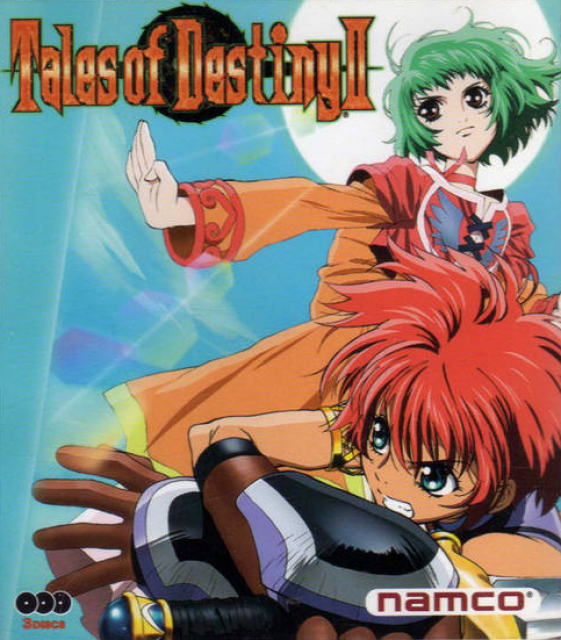Fun Combat, The Rest Ranges From Inept To Anodyne
I picked this game up because it was a late-era PS1 game that had a great look to it and had the trappings of a hidden gem - I'm no big Tales fan but I've enjoyed a few here and there.
As I play through JRPGs as an adult, with a more complete understanding of what even semi-competent writing and game pacing is, I find "classic" JRPGs I (re)visit tend fall into one of two camps - truly stellar on all fronts and well-deserving of praise, or mildly entertaining in a mechanistic sense with excruciating pacing and sub-basement-level character writing and plotting.
Destiny II/Eternia is the latter - a marked and highly enjoyable improvement over the Phantasia/Destiny combat system, marred by awful character writing and bad plot pacing. Often this is the result of a poor localization - but not in this case, the localization is perfectly decent and does what it can with the source material - this game hit at the end of the PS1 lifecycle at a time when companies were finally churning out tolerable localizations, and Destiny II's localization was even important enough to be blessed with English voice acting (which is also fine, given the unconvincing and amateurish drivel coming out of the character's mouths - I'm not sure why people bag on it, the VAs do a decent job with what little they're given).
It's a nice length - roughly 35 hours for a non-obsessive completionist playthrough. For the most part pacing and difficulty curve are about right - though the game clearly runs out of narrative steam in the last third, puts the main plot on hold, and resorts to padding out game length with not one, not two, but what feels like roughly half a dozen MacGuffin quests that you have to scour the seafloor for.
The dungeons are tolerable - some light puzzling, none of them are too long or frustrating, with the noticeable and puzzling exception of The Forest Of Temptation, which is nonlinear, heavy on backtracking, and generally a pain - even more so than the final dungeon - and which, inexplicably, is the first real dungeon in the game. I'm not sure what happened there but it's a design misstep.
The magic system manages to be slightly more convoluted and opaque than it actually needs to be, given that there are only two magic users in the game - there's very little actual build flexibility in terms of magic once you get past the UX issues.
The story is lightly interesting, but its high points are wasted on terrible, shallow and inconsequential characterizations - not a single one of the characters is interesting or even comes off as remotely human with a believable arc, with the exception of an eggbear you possess for roughly 5 minutes - all this results in something you won't remember for more than 10 minutes after beating the game, assuming you stick around long enough to do so and aren't turned off by the shoddy character writing.
The world is...largely a hodgepodge of worldbuilding ideas that don't always gel into something that feels coherent and immersive - the dual planets thing is conceptually far more interesting than it actually is in the game. There's a Very Normal And Boring World Inferia, which you spend too much time in, and a Weeeiird And Straaange Technology World Celestia, which isn't actually that weird or strange or memorable, inhabited by dark-skinned people (you know, dark skin, it's Weird and Strange and Exotic), inexplicably none of whom share the strange speech patterns or halting accent of your primary Celestian party member - all of this is a shame and a missed opportunity.
The game doesn't have a whole lot to offer outside of the core gameplay loop - there's not a lot of meaningful exploration, there's virtually no NPC interaction of any depth, there are almost no substories of note, the towns are small and there's little to find or do in most of them. The game has quite a few minigames (including an Uno clone which is randomly introduced in the middle of a dungeon), but none of them amount to anything. There's an optional dungeon or two or three if you want more combat - but that's about it, there's virtually no optional story content of note.
The combat is quick and flows well and is a ton of fun - as many have (rightly) said, it's definitely the best 2D Tales combat has been - the combat and the relatively short length (35 hours or so) are all that kept me from dropping the game before completion.
I haven't played enough Tales games to know if this is the best Tales game, or the best 2D Tales game - but it sure as hell isn't a particularly remarkable JRPG outside of the above-average combat system. This one hasn't aged well and probably isn't worth playing unless you can hold your nose and ignore everything but the combat, and have some time to kill.
